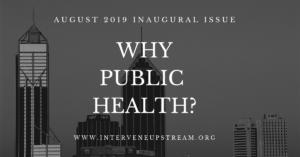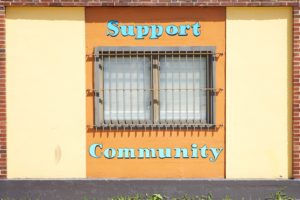Scrolling. Scrolling. Scrolling. Stop. Like. Share. Scrolling. Scrolling. Stop.
Something is different this time. You see a child, so scrawny their collarbone seems it may crumble under its own weight, clutching an IV bag that is crudely attached to an adult. Curled up on newspaper and cardboard. Dirty, scared and alone. Wrapped in a random assortment of fabrics. You read the caption and you click “like.” Your finger hovers above the share button. You press down gently on your expensive new touch screen phone. This time, you click the link on the page to get involved.
Getting involved through social media is a common first step for many campaigns and a great step to becoming more involved in social activism. It can also become a vital tool for public health officials and initiatives to cultivate community awareness.
The question is: Can these online communities built up around us that are chock full of activism, viral sensations and cat videos lead to offline wellness?
The short answer is yes.
The longer answer is that in today’s society, we are all a part of an online community from the moment when we first log in. Social media shapes our values, interactions, relationships and even job prospects. It is no grand leap to suggest that it would also have a large impact – for better or for worse – on our real-life health and wellness. We often perceive that our friends’ actions begin – and end – with the “like” button. Yet, there is some comfort to be found in knowing that social media can support the creation of a fast-acting global community IRL. According to recent Pew Research Center statistics, seven-in-ten Americans use social media to connect with others, engage with news content and entertain themselves.1
Social Media Engagement Contributes to Population Health
Social media is a networking and community building tool often used to address social and political issues. It is also used as an informational resource to keep up on the latest news; from the Kardashians to the daily weather, any information can be found and subsequently shared via social media. “The more people are on the Internet and the more they are involved in online organizational and political activity, the more they are involved in offline organizational and political activity” suggests a study published in a 2001 edition of American Behavioral Scientist.2 This means that a substantial amount of people get involved in projects through the internet and then branch out to be involved offline as well. Frequently, we adopt social media as an outlet to share opinions or interests and to strengthen community ties by directly interacting with one another to solve problems.
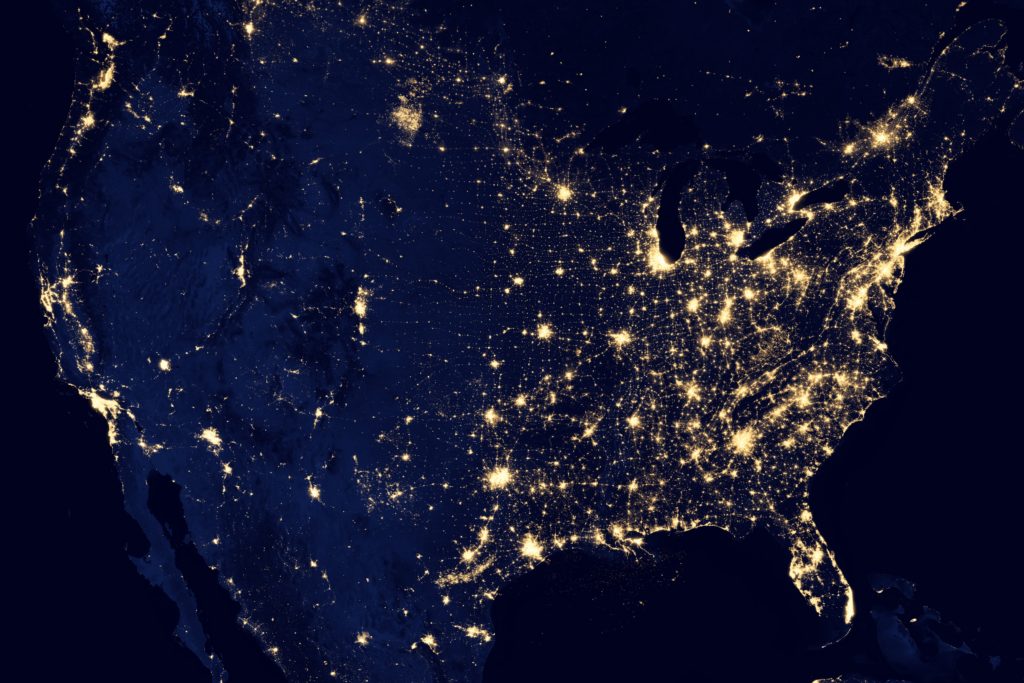
The flood of endorphins triggered by the rushed tapping of fingers on keys can effortlessly elicit a feeling that our social media shares are having a concrete impact. Our likes may not create tangible changes themselves, but they provide interesting insights into our societal impact offline. There is evidence that informational use of social media actually provides significant positive impacts on a user’s civic and political activities.3 As part of their Internet and American Life study, the Pew Research Center found that 31% of users encourage others to take action in respect to issues that are important to them personally and 28% of users share links to articles related to political issues for others to view. 4 This means that the creation of social media campaigns for public health issues should be able to spread across the “cyber sphere” as well as any other type of content.
Social Media as a Tool for Health Education
Multiple studies have even already started to illustrate the impact that social media (or mass media) public health campaigns can have on the health of certain communities. In fact, a study done in 2008 by Jane Sarasohn-Kahn for the California HealthCare Foundation explored the crossroads of healthcare and social media. The study included these figures, as displayed below. As this figure suggests, most adults access health information from the internet than their physicians.4 While this may seem like a scary prospect, this also represents an exciting opportunity for the field of public health.
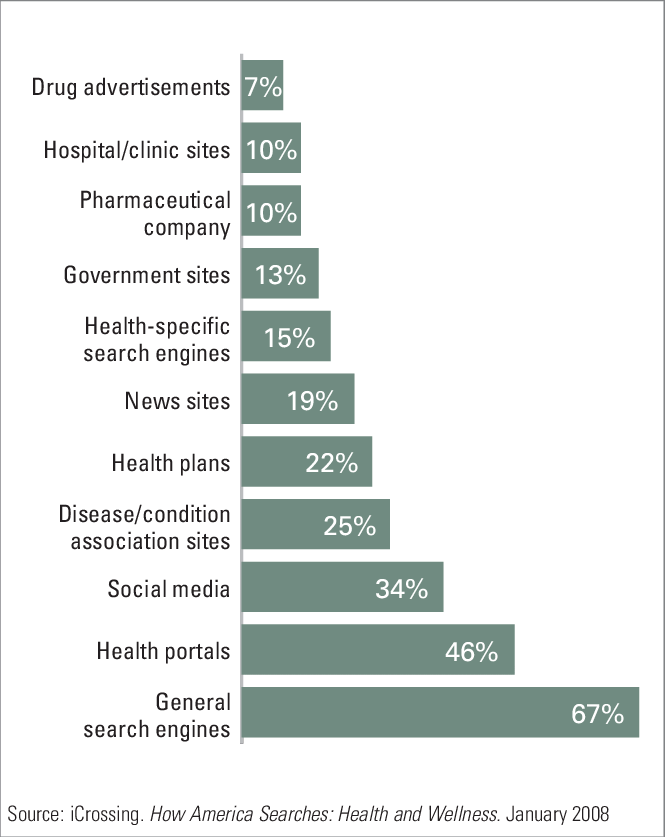
Online tools and resources used to locate health information, as referenced from The Wisdom of Patients: Health Care Meets Online Social Media. Source: https://www.researchgate.net/figure/Online-Tools-and-Resources-Used-to-locate-Health-Information_fig1_242101734 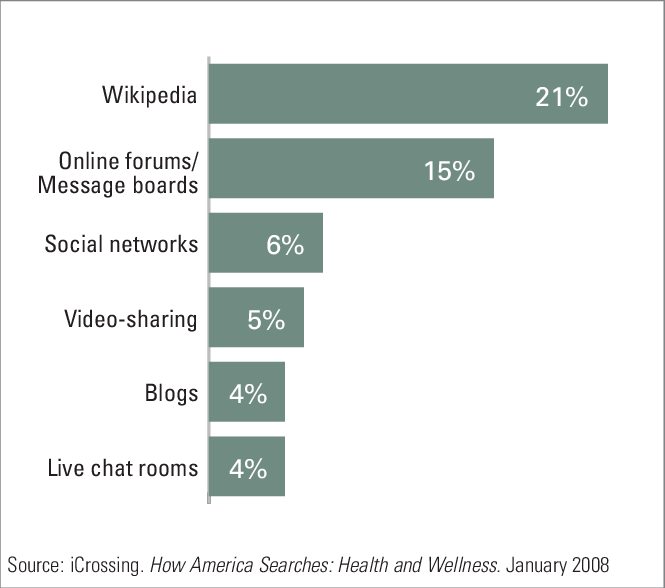
Social media platforms for acquiring health information, by usage, as referenced from The Wisdom of Patients: Health Care Meets Online Social Media. Source: https://www.researchgate.net/figure/Online-Tools-and-Resources-Used-to-locate-Health-Information_fig1_242101734
The report by the California HealthCare Foundation even references studies dating back to 1979 that illustrated the positive impact common media can have on community and population health.4 More currently, a study report by the CDC’s Community Guide and their Community Preventive Services Task Force. They found that the more exposure an individual had to anti-tobacco media messages the less likely they were to use tobacco. Interestingly, it was found that the exposure to these messages did not lead to a direct effect – but it did lead to increased use of quitlines. This is most likely due to making quitline more accessible and well known. It was then found in 17 of the studies that an increased use of quitlines resulted in an increase in smoking cessation. It was also found that high exposure, recall and/or appeal of these messages in young adults (ages 11 to 24 years) lead to reduced tobacco use even in “high-sensation-seeking” youth.5
Social Media in Raising Awareness of Community Issues
This isn’t the only data suggesting social media and media messages can turn the tide in the public health world. Another study, published in 2019 by Springer Berlin Heidelberg, assessed attitudes towards mental health through social media, analyzing a sample of over one million tweets. They found that the amount of tweets about mental health and raising awareness about mental health have surpassed those about physical illnesses.6 The overall result was that stigmas are still highly prevalent on social media despite an increase in tweets about mental illnesses. The group suggested that future campaigns for mental health awareness or de-stigmatization dedicate time to specifically focus on each type of social media to combat some of the negative and stigmatizing incidences on Twitter and other social media.6
Clearly, it is a common perception today that social media is only a detriment to personal wellness. True, in the rat race world of “likes” and “shares,” it is easy to get caught up in sensationalism and bogged down by negative anecdotes and false facts. Of course the drawbacks shouldn’t be overlooked. We are pumped full of advertisements, divisive and biased articles and blatantly false “facts” on a daily basis through social media. And there are also people using social media to replace offline activities like attending church, going to the big game or simply being present in the moment.
Overall, we see that internet use is supplementary to social contact for most users2 and social media users are more active —civically and politically —than non-users.4 Clearly, social media impacts the lives of community members online and IRL, so let’s start changing the narrative.
Let’s replace the anecdotes about vaccine horror stories with stories of life-saving immunizations being distributed across the globe. Let’s replace stories about “millennials” eating Tide PODS with stories about millennials breaking the stigma around mental illnesses. Let’s replace stories about big pharma conspiracies in regards to research with stories about translational research that is changing the lives of millions with rare, under-researched diseases. Let’s start flooding screens with content that directly reaches and positively influences the groups that we as public health officials try to impact each day.
Oh, and thank you for liking, commenting and subscribing.
- COVID-19 & Implications for Behavioral Health Providers in Unprecedented Times - September 15, 2020
- There’s an App for That: A Look at the Science Behind Health Apps - May 5, 2020
- Thank You for Liking, Commenting, Subscribing - September 10, 2019
- (2019, June 12). Demographics of Social Media Users and Adoption in the United States. Retrieved from https://www.pewinternet.org/fact-sheet/social-media/ [↩]
- Wellman, B., Haase, A. Q., Witte, J., & Hampton, K. (2001). Does the Internet Increase, Decrease, or Social Capital?: Social Networks, Participation, and Community Commitment. American Behavioral Scientist, 45(3), 436–455.https://doi.org/10.1177/00027640121957286 [↩] [↩]
- Gil de Zúñiga, H., Jung, N., Valenzuela, S. (2012); Social Media Use for News and Individuals’ Social Capital, Civic Engagement and Political Participation, Journal of Computer-Mediated Communication, Volume 17, Issue 3, 1 April 2012, Pages 319–336, https://doi.org/10.1111/j.1083-6101.2012.01574.x [↩]
- Rainie, L., Smith, A., Schlozman, K. L., Brady, H., & Verba, S. (2012). Social media and political engagement. Pew Internet & American Life Project, 19, 2-13. [↩] [↩] [↩] [↩]
- Tobacco Use and Secondhand Smoke Exposure: Mass-Reach Health Communication Interventions. (2019, April 16). https://www.thecommunityguide.org/findings/tobacco-use-and-secondhand-smoke-exposure-mass-reach-health-communication-interventions [↩]
- Robinson, P., Turk, D., Jilka, S. et al. Soc Psychiatry Psychiatr Epidemiol (2019) 54: 51. https://doi.org/10.1007/s00127-018-1571-5 [↩] [↩]



